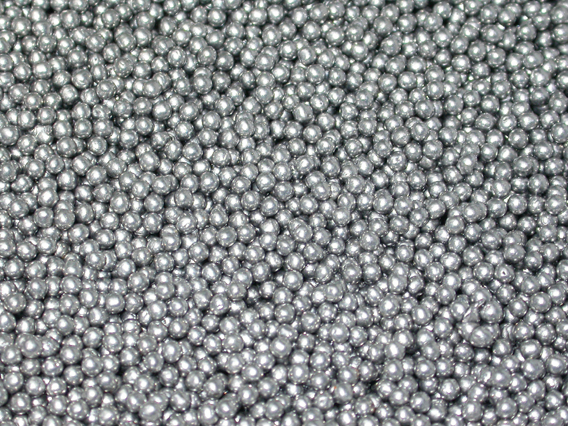TOP STORIES Lead Shot and Sinkers: Heavy Implications for Wildlife
Lead Shot and Sinkers: Heavy Implications for Wildlife
USGS Corecast - www.usgs.gov/corecast
11 Jul 2008
S Gerould
Image courtesy of www.svartkrutt.net
Area: United States
Millions of pounds of lead used in hunting, fishing, and shooting sports wind up in the environment each year and can threaten or kill wildlife, according to a new scientific report. Sarah Gerould, head of the USGS's Contaminant Biology Program, talks with Dr. Barnett Ratter, a USGS scientist at the Patuxent Wildlife Research Center and a co-author of the new report, about the ways lead is affecting wildlife and their habitats. This episode includes images and video.
 South Africa's Mystery Croc Die Off Continues
South Africa's Mystery Croc Die Off ContinuesOhmy News - english.ohmynews.com
11 Jul 2008
N van der Leek
Image courtesy of www.flickr.com
Area: Olifants River, Kruger National Park, South Africa - Map It

Something very strange is happening in a favorite crocodile haunt, the Olifants Gorge, in South Africa's Kruger National Park. Crocodiles are dying en masse, and a local television documentary has showed, recently, the many carcasses floating in the river or lying dead in the sun on the river bank. In the month of June alone, 30 carcasses were counted in the Olifants River area alone. This figure has subsequently risen to 50. Most carcasses appear to have distinctive discoloration in the tail's fat tissues. The tissue is a mustard yellow color, and unusually hardened.
 Reported Wildlife Mortality Events to the USGS National Wildlife Health Center Updated
Reported Wildlife Mortality Events to the USGS National Wildlife Health Center UpdatedUSGS National Wildlife Health Center
14 Jul 2008
Area: United States
USGS and a network of partners across the country work on documenting wildlife mortality events in order to provide timely and accurate information on locations, species and causes of death. This information was updated on July 10, 2008 on the USGS National Wildlife Health Center web page, New and Ongoing Wildlife Mortality Events Nationwide. Quarterly Mortality Reports are also available from this page. These reports go back to 1995.
 What’s the buzz about all our missing bees?
What’s the buzz about all our missing bees?The Gazette - www.gazette-news.co.uk
11 Jul 2008
I Clapp
Area: United Kingdom
. . . It isn't only the varroa mite which has reduced bumblebee numbers. Intensive farming and a cut in the number of insect-pollinated crops (more cereal crops, fewer bean crops) have also led to decline. Three of the UK bumblebee populations are already extinct and another nine are on the endangered species list. . . . Britain and Ireland have 25 native species of bumblebee. Five are currently listed in the UK Biodiversity Action Plan because of their rapid decline - bombus distinguendus (great yellow bumblebee), bombus humilis (carder bumblebee); bombus ruderatus (large garden bumblebee), bombus subterraneus (short-haired bumblebee) and bombus sylvarum (shrill carder bee).
OTHER WILDLIFE HEALTH NEWS
Image courtesy of Nicole Harnishfeger/Inquirer and Mirror
- What's killing carp? - Lake Simcoe, Ontario, Canada - Map It

- Sewage blamed for fish deaths - Bahrain - Map It

WILDLIFE HEALTH RELATED PUBLICATIONS
Newsletter of the Wildlife Disease Association - July 2008
[includes National Wildlife Health Center’s Quarterly Wildlife Mortality Report, Jan - Mar 2008]
Patterns of lesions of bovine tuberculosis in wild red deer and wild boar
Vet Rec. 2008;163 43-47 [online abstract only]
G. Zanella et al.
Surveillance Sans Frontières: Internet-Based Emerging Infectious Disease Intelligence and the HealthMap Project.
PLoS Med. 2008; 5(7): e151 [free full-text available]
JS Brownstein et al.







No comments:
Post a Comment